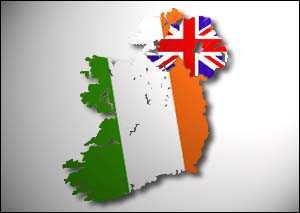January 30, 1972 Partition of Ireland
 Northern Ireland Bloody Sunday
Northern Ireland Bloody Sunday
Ex-Soldier is Questioned in 72 Killings at Ulster Rally
LONDON ― The police in Northern Ireland arrested a 66 year-old man on Tuesday in connection with Bloody Sunday, the infamous massacre of unarmed civilian marchers by British soldiers in Londonderry on Jan. 30, 1972. It was the first time anyone had been arrested for the massacre, for which the British government formally apologized in 2010.
Source: The New York Times. November 11, 2015
Gen. Sir Robert Ford is dead at 91; British Commanders on ‘Bloody Sunday’
GEN. SIR ROBERT FORD, THE MOST SENIOR ARMY FRONT-LINE COMMANDER IN NORTHERN IRELAND WHEN BRITISH PARATROOPERS FATALLY SHOT 13 UNARMED ROMAN CATHOLIC CIVIL RIGHTS PROTESTERS IN 1972 ON WHAT BECAME KNOWN AS BLOODY SUNDAY, DIED ON NOV. 24. HE WAS 91.
The killings on Jan. 30, 1972, in Londonderry, occurred after the regiment was deployed there to contain an illegal march. The demonstrators were protesting the imposition of preventative detention, or internment without trial, as a means to quash the mostly Roman Catholic Irish Republican Army in its fight against the British-backed government of Northern Ireland, a Protestant-dominated province.
The paratroopers insisted that they were returning fire, but none of the victims were found to be armed, and an exhaustive inquiry concluded that the soldiers had lied.
The killings prompted more protests (the British Embassy in Dublin was set on fire on Feb. 2), drove a new wave of recruits to Irish Republican Army ranks and resulted in the most casualties, including British soldiers, of any year of the divisiveness known as Troubles.
Source: The New York Times. December 1, 2015.



